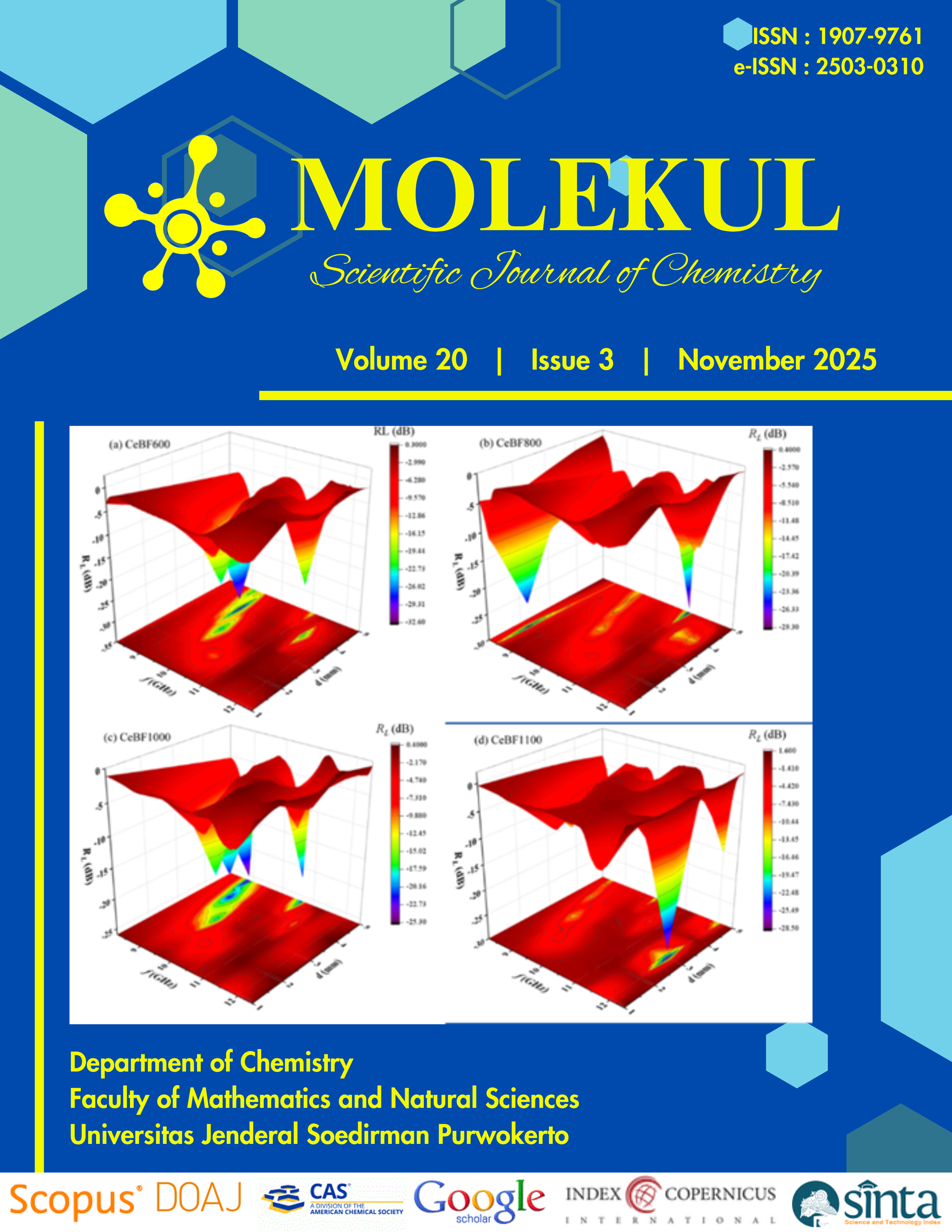Batik Wastewater Treatment by Using Mono and Polyculture Phytoremediation Utilized Giant Salvinia (Salvinia molesta) and Water Spinach (Ipomoea aquatica)
Abstract
ABSTRACT. Phytoremediation with mono and polyculture systems of giant salvinia (Salvinia molesta) and water spinach (Ipomoea aquatica) plants for the treatment of batik wastewater has been carried out. This research aims to study the effect of giant salvinia and water spinach plants in reducing pollutant levels in batik wastewater, determine the order kinetics of Cu, TDS, and BOD reduction in monoculture and polyculture systems, and determine the effectiveness of Cu, TDS, and BOD reduction in monoculture against polyculture system. The research methodology included two main treatments, namely phytoremediation and data analysis. Phytoremediation was carried out by varying the combination of water spinach and giant salvinia plants with ratio of 0:100, 50:50, and 100:0 with a total plant mass of 100 gr. Analysis was conducted based on spectrophotometric and gravimetric principles. The results of the analysis were tested for significance by ANOVA test. Research data showed that polyculture of giant salvinia (Salvinia molesta) and water spinach (Ipomoea aquatica) could increase the effectiveness of reducing Cu metal by 91%, dye by 90%, and TDS by 36%. While polyculture system has better effectiveness in reducing Cu metal, TDS and dyes concentration than monoculture system, but the difference in effectiveness is not statistically significant.
Keywords: Batik wastewater, Ipomoea aquatica, mono and polyculture, phytoremediation, Salvinia molesta.
Authors agree with the statements below:
- Authors automatically transfer the copyright to the MOLEKUL journal and grant the journal right of first publication with the work simultaneously licensed under a Creative Commons Attribution 4.0 International License (CC BY 4.0).
- Authors are able to enter into separate permission for the non-exclusive distribution of the journal's published version of the work (e.g., post it to an institutional repository or publish it in a book), with an acknowledgment of its initial publication in this journal.













